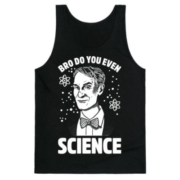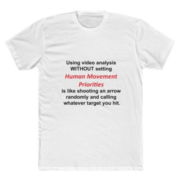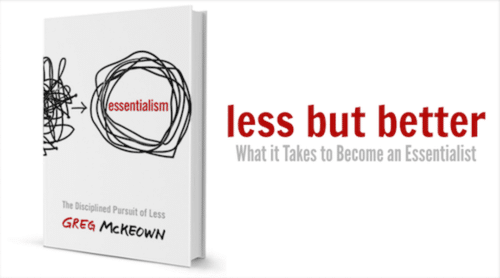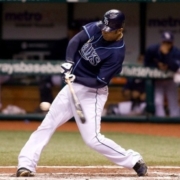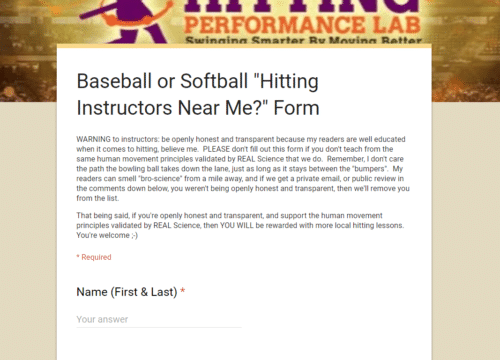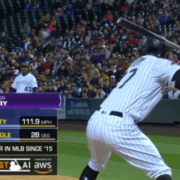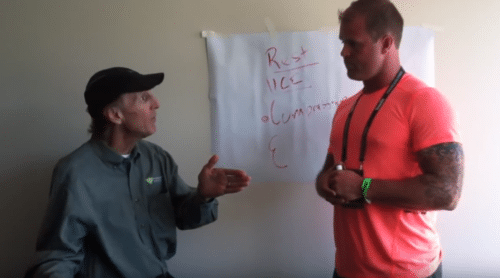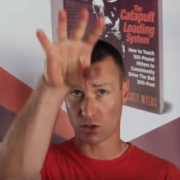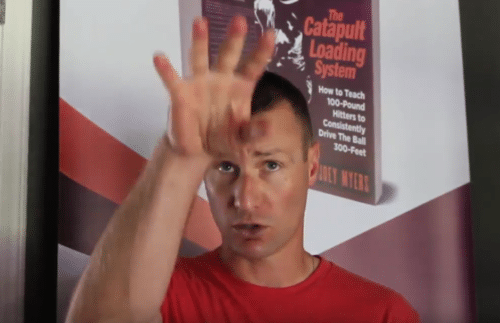How To Fix The Hitting “Guru” #57 Problem Once And For All – A New Year’s Resolution…
Consider the following Tweet from Matt Pierce, who I highly respect in hitting circles…
2019 Want
For Coaches to stop mocking other coaches. For coaches to stop blasting guys bc of the level they coach. For coaches to stop using the word guru in describing a coach that they disagree with. For coaches to spread info without the need to attack others in their teach.— matt pierce (@tx_pierce) January 1, 2019
I love what Matt is saying here, and I agree with him 100%! I’ve wanted to address this for some time, but couldn’t figure out how to frame it without coaches thinking I’m delusional. However, I’m about to reveal this is a Mount Everest “ask” because:
- We can’t control what we can’t control (e.g. other people’s actions or reactions).
- We don’t know what we don’t know (knowledge – and/or common sense – isn’t always what people are seeking).
- People don’t want to leave their chosen “tribe” (when we put many years into thinking one way, it’s hard to change, no matter the mountain of evidence to the contrary).
- Fixed Mindset is a REAL thing (nothing is more fragile than a 40-year-old male ego).
At the end of this post, I will share 11 things I think cuts to the heart of the debate (HINT: it has to do with a case of “mistaken identity”)…
PLEASE NOTE: I’m no saint in this conversation, so let me get that out of the way. I’ve been called “unprofessional” in some of my responses on the Socials. I own that. I’m not a robot devoid of emotion. To my defense though, I do let people have their say, and seldom “hide” or delete Social media comments – no matter how ridiculous – because I feel coaches should see us with all bumps and bruises.
Now, let’s address Matt’s big asks:
- Want for coaches to stop mocking other coaches.
- Want for coaches to stop blasting guys bc of the level they coach.
- Want for coaches to stop using the word guru in describing a coach that they disagree with.
- Want for coaches to spread info without the need to attack others in their teach…
It starts with the fact…
We can’t control what we can’t control (e.g. other people’s actions or reactions)
Here is one of my personal rules for posting on Social media: DO NOT respond to another hitting person’s Social media post, Tweet, etc. that I don’t agree with. And I see A LOT of garbage out there, believe me. But I don’t feel the need to tell them so…I keep my hands to myself. Imagine for a moment, you sell a hitting aid, book, or online course, and you get one the following dandy comments… (think about how you’d react)…



![]()

And here’s a YouTube comment on one of my videos…

If you can’t read the YouTube comment, then it’s because the image is too small…here you go (incorrect spelling and grammar intact)…
“This video is silly to me. First and most importantly, you do not teach any player especially a young player how to hit deep fly balls or “in the air with power. Why and the hell would you do that? Don’t pollute the internet with this garbage any longer. Btw, every hitter “gets shorter”. It is impossible to gain any ground and not drop. There is no strategic advantage in it nor should it be stressed in instruction. It’s a natural part of any swing and has nothing to do with power or hitting fly balls. Your messing up swings with shit.”
By the way, the above comments aren’t too bad, I have others 10X as bad. Look, I don’t mind healthy debate, but it MUST be respectful, and no respectful conversation can start with any one of the above comments. Sue me for coming off as “unprofessional” in responses. Good times is Taylor Gardner (Backspin Tee), Matt Lisle, and I snapshotting them on our phones, and laughing over drinks…true story.
So NO, we cannot control how others react or respond. Building the case of our “mistaken identity” solution is starting to take shape. Now, let’s address the fact…
We don’t know what we don’t know (knowledge – and/or common sense – isn’t always what people are seeking)
As you were reading those dandy comments above, were you thinking, “I don’t think this person knows about the Hitting Performance Lab.” Therein lies the frustration.
To their defense, they’ve only seen ONE post or ad from us on the Socials. They…
- Don’t know us from “Adam”.
- Haven’t done their homework.
- Have been burned by others in the industry (a clue to our “mistaken identity” solution…).
I don’t take the comments personal anymore. They don’t understand how we’re:
- Applying human movement principles validated by REAL Science to hitting a ball, NOT because-I-said-so “bro-science”.
- Leading close to 40,000 coaches on this journey.
- Sharing nearly 300 FREE blog posts that hold nothing back when it comes to breaking down the what, how, and why of our system.
- Blessed to have an Amazon best selling book on hitting, over 11,500 books sold and downloaded, and has accumulated well over 100 Amazon books reviews with an average star rating of 4.3 out of 5 (includes both first and second edition of The Catapult Loading System
).
- Gifted frequent positive testimonials from our readers on a weekly basis via Social media and over email, which you can read on our About page.
So yes,
- We’re dealing with people who don’t know what they don’t know. And,
- We can’t control what we can’t control.
…Coaches, we MUST understand this. Building the case of our “mistaken identity” solution is picking up speed. Now, let’s address the fact…
People don’t want to leave their chosen “tribe” (when we put many years into thinking one way, it’s hard to change, no matter the mountain of evidence to the contrary)
I talked to Dr. Tom Hanson about this recently. Consider the “Church of Baseball” or “Politics of Baseball”. The idea is that based on our life experiences, we stick close to our current “tribe” for fear of missing out, being ostracized, and/or being abandoned when seeking another tribe. Even if the “other” tribe provides a mountain of evidence to the contrary of our thinking.
I call it wearing hitting “beer goggles”. Refusing to take off the distorted glasses to seek real facts and actual truth. In 2013, I completely jumped out of the hitting industry, refused to read or watch anything hitting, and completely pivoted to researching Physics, Bio-mechanics, Engineering, Body Work, etc. I didn’t understand it at first, but kept reading and re-reading – eventually it started to sink in.
We’re seeing this “beer goggle” theory play out in the Politics right now. Most of you have seen ridiculous comments on your Facebook feed from others…past or current friends about Political issues. I’ve seen people on both sides “un-friend” each other because one believes one thing and the other believes the complete opposite. People are retreating to their tribe’s boxing corner, and staying there.
Look familiar? Because it’s happening to our hitting community. People become attached to certain hitting “gurus”, a word I know Matt said not to use. I had quite a few talks with a current professional hitter, who has had quite a few cups of coffee in the Big Leagues, saying many “gurus” are out there trying to reinvent the wheel. And what he means by that is, they’re teaching the same thing as everyone else but calling it something different and claiming ownership.
The reality is originating something new occurs with far less frequency than innovating something new. Give credit where credit is due coaches. If people took the time to research where ideas originated, then the number of “tribes” people stick to would shrink to one or two. And even with those, hitting agreement would probably reach 98%.
So yes,
- We can’t control other people’s actions or reactions.
- Knowledge – and/or common sense – isn’t always what people are seeking. And,
- When we put many years into thinking one way, it’s hard to change, no matter the mountain of evidence to the contrary.
We’re almost done building the case for our “mistaken identity” solution. Now, let’s look at the fact…
Fixed Mindset is a REAL thing (nothing is more fragile than the 40-year-old male ego)
I won’t get into this here because I got into it here AND here. But I will say this, I’ve fallen into the Fixed Mindset trap. It’s like a cozy warm blanket, and much easier to misplace blame when we don’t know the answer. For example, how do you explain a kid by the name of Hudson White at 14-years-old blasting 11-dingers in a row at the National Power Showcase, averaging 395-feet in batted ball distance – when he’s only 5-foot, 7-inches, weighing 135-pounds?
“What bat did he use?” …a few may ask…metal minus-5…“See!!” they exclaim, “The bat is HOT!!” But what if I were to tell you eye-witness accounts have said that Hudson consistently hit balls 395-feet with an old Hickory wood bat? How do we explain something we may not understand?
- “He’s just a special case”
- “He’s using a HOT bat”
- “He can’t do that in a game though”
- “They’re lying or mistaken about the distance”
These are FIXED Mindset coaching responses (from real people by the way!). Look, it’s okay to say you don’t know, and here’s an even better TIP…if one does not know something, then keep the “pie-hole” shut. The above bullet point comments take away from the hard work these hitters have and are putting into their swings. Shameful.
Instead acknowledge maybe your knowledge is limited and seek to understand, not to be understood. Ask “WHY”, not “Why Not”. Every day, ask: “Is there something I may be missing”. This is what Growth Mindset coaches do.
So yes,
- We can’t control what we can’t control.
- We don’t know what we don’t know.
- People don’t want to leave their chosen “tribe”. And,
- Nothing is more fragile than the 40-year-old male ego.
Fixing the issue of “mistaken identity”
Before getting to fixing the issue of “mistaken identity”, let’s review Matt’s big asks:
- Want for coaches to stop mocking other coaches.
- Want for coaches to stop blasting guys bc of the level they coach.
- Want for coaches to stop using the word guru in describing a coach that they disagree with.
- Want for coaches to spread info without the need to attack others in their teach…
Before agreeing to his “asks”, I want to scribble in a few more…
- Parents and coaches start conversations with respectful first comments.
- Parents and coaches seek to understand first, then to be understood.
- Parents and coaches be willing to try a new-to-them concept first, before resorting to being a negative Nancy armchair quarterbacks. And,
- I think if the previous three are checked off, then setting ego aside and looking at issue from a Growth Mindset perspective will be 10X easier.
Possible? Maybe, but it’s a TALL order. If those points cannot get checked off, then I claim my 1st Amendment right to call out Hitting “Guru” #57. Do we have a deal Matt!?
Now, to solve the case of mistaken identity…
For those who know how we operate at the Hitting Performance Lab, remember reading through those Facebook and YouTube comments in the beginning of this rant, and thinking they’re falsely associating and projecting a bad experience they may have had with another hitting “guru”? Here are my BIG “asks”:
- Quit basing your teachings on because-I-said-so “bro-science” (What is that? CLICK HERE). It doesn’t work predictably. I know because I used to base my teachings on it, and can now compare our hitters’ performance to what we teach now – WOW! What a difference. Apply human movement principles validated by REAL Science. Success leaves clues, and principles work predictably. Btw, failure leaves clues too!
- It’s not about how many years you’ve coached. It’s not about what high level you played at. It’s not about how many hours of video analysis you’ve masterbated with. It’s not even about how many long hours you’ve put into the cages. At the end of the day, it’s about getting your hitters predictably positive hitting results. Think of human movement principles as a shortcut (a good one) to spotting common patterns amongst elite hitters – saving you many hours of spinning the tires. Work smarter not harder.
- Data IS NOT Science. Data is a component of the Scientific Method, not the end-all-be-all. Basing your teachings ONLY on data or video analysis without human movement priorities is like randomly shooting an arrow and calling whatever you hit.
- Don’t strike fear into parents that if they don’t spend money with you, they’ll be doomed to hitting purgatory for eternity. This is a bonehead move, and I’m tired of getting these projected comments thanks to bad business practices.
- Help people by actually helping them. Over the years, we’ve written nearly 300 free blog posts that detail our system. Don’t just try and sell people…help people…then selling becomes the next logical step.
- Ben Brewster Twitter quote: “In the process, a few percent of our followers are willing to invest big time to know that last 2%. But I hate the paranoid, protective mentality thinking that people might steal your one good idea or philosophy. They might. Keep innovating and learning, you’ll have many more.” Right on! SHARE what’s working. Keep learning. Keep innovating. Give credit where credit is due. You will be greatly rewarded, believe me.
- Moderation is key. Hitting IS NOT rotational OR linear. It’s not Launch Angles OR ground-balls. It’s not sacrificing swing quality for power. It’s NOT swing down OR swing up. We can build a hitter that embodies linear AND rotational elements…who hits more line drives…who can hit for power AND average without dramatically increasing strikeouts…who can use “swing down” cues to fix an uppercut AND use “swing up” cues to fix a down swinger.
- Understand we can eat tomato soup with a spoon, fork, or knife but only one tool is more effective. Teaching hitters is the same. There may be many ways to teach hitting but there’s one MORE effective way…by applying human movement principles validated by REAL Science to hitting a ball. The principles remain constant and limited, but I do agree there are hundreds – if not thousands – of ways (methods) to teaching them. Listen, I don’t “own” these principles, I just happened to look where most weren’t looking, and stumbled onto them.
- If someone posts a video of a swing online, DO NOT pick apart without the owner asking you. Video analysis of a hitter is a snapshot in time of the swing. It’s a work in progress. So unless otherwise solicited to give your advice, don’t. I see a few “gurus” out there “red-lining” through swings of 8yos, 12yos, and 16yos – unsolicited, to prove a point. That’s a real kid, someone’s son or daughter…niece or nephew…or client. STOP doing this, or you’re a bully.
- Don’t drunk dial Social media. Don’t lie, you’ve done this (I know I have). Don’t drink the liquid courage and then comment. Remember what I said about taking off your hitting “beer goggles”?
- Coaches, if you promote digital products, books, and/or membership programs, then STOP “tricking” people into signing up. Be upfront and honest with people. It gives the rest of us working to do it right a BAD name.
I think a combination of Matt Pierce’s “asks” and my additional “asks” will turn this ship around. OR, we’ll get much of the same thing in 2019! Coaches, go forth and make awesomeness…




